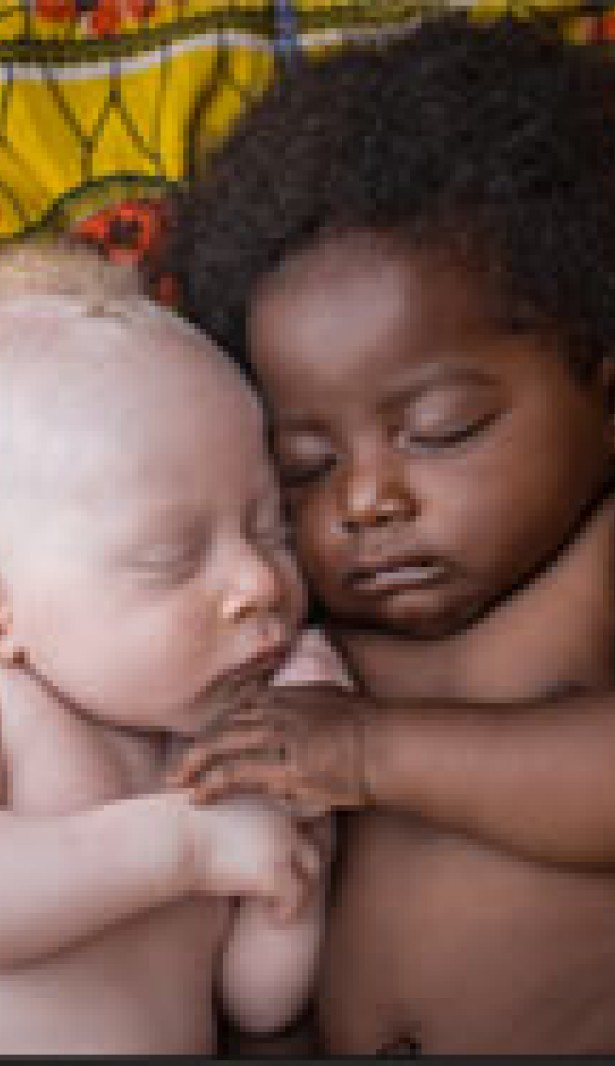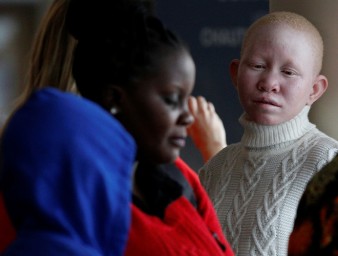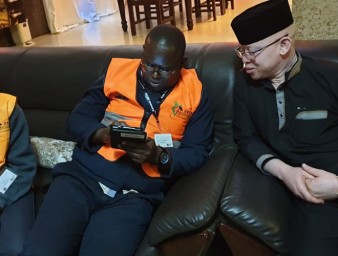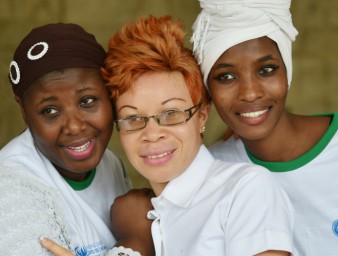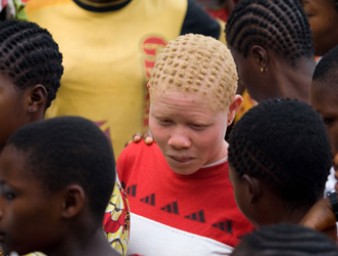White Ebony
23 March 2015
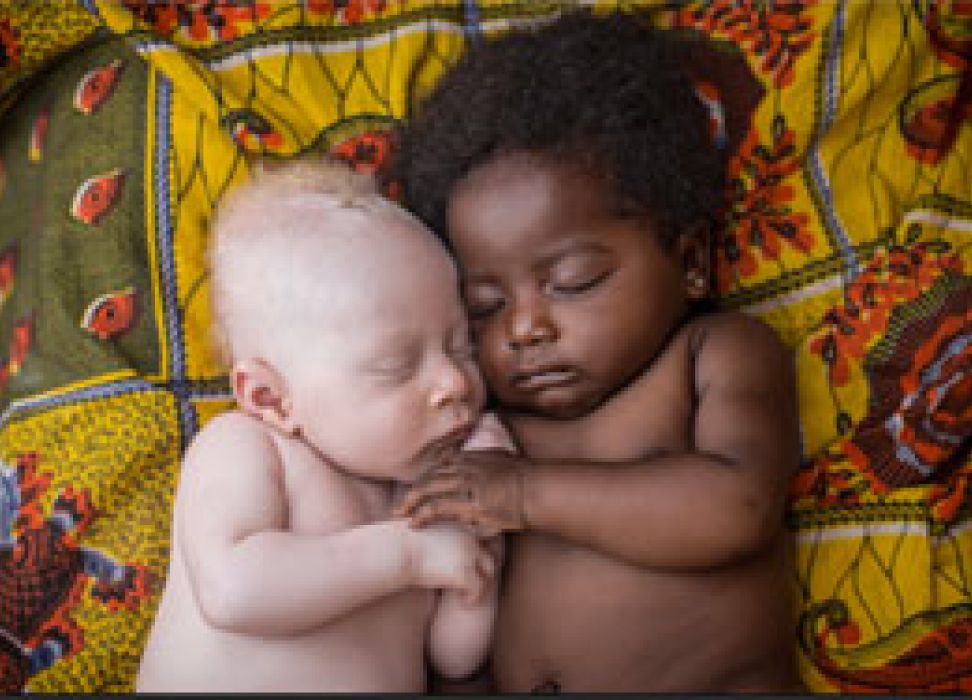
In her portrait, a pregnant Gyselène reveals her immaculate belly that she permanently shields from the sun. Because she has left those parts of her body unprotected, the skin on her arms and face present precancerous lesions. The probability that Gyselène will die of skin cancer is very high.
Another photograph shows Gyselène a few weeks later proudly presenting her 10 days old daughter, Patricia. Throughout her pregnancy Gyselène wondered if her child would be Black or born with albinism. She confesses that she was relieved to find out that Patricia did not have albinism, because she did not want her to experience the same discrimination she did.
“Blanc Ebène – White Ebony,” a photography exhibition at Palais des Nations on the side-lines of the Human Rights Council, highlights the issue of the rights of persons with albinism in the Democratic Republic of Congo (DRC). The photographs are part of a larger essay created by photographer Patricia Willocq, and show persons with albinism, young and old, integrated in the societies where their live, protected and cared for by their loved-ones, although underlying rights challenges remain.
“These are positive images seldom seen in Africa and, indeed, in other parts of the world,” said Flavia Pansieri, UN Deputy High Commissioner for Human Rights. “While we continue to receive shocking reports of killings and attacks against persons with albinism, these photos send a message of hope and encouragement for all those who work to improve their lives.”
The photo essay was inspired by the work of the Mwimba Texas Foundation which raises awareness about the rights of persons with albinism in DRC. Because of his determination and his fame, Alphonse Mwimba Texas, DRC’s first professional wrestler with albinism, was able to positively change the negative perceptions that some of his compatriots may have had on his condition.
Willocq, who was also born in the Congo, left the capital Kinshasa as a child only to return some twenty years later, when the UN Human Rights Council and General Assembly passed their resolutions on the rights of people with albinism. That and her encounter with Mwimba Texas were what she calls “a trigger.”
“When I once again saw a person with albinism in the streets of Kinshasa when I returned, I immediately remembered the fascination I had, as a child, for these children. Since I'm a photographer, I decided to make a photo essay combined with social activism to help the Mwimba Texas Foundation,” Willocq says. “The UN resolution on the 13th June [International Albinism Awareness Day] has only strengthened my desire to help them.”
Willocq endeavours to always avoid miserabilism. Her images subtly alert to the medical issues that people with albinism may face; the poverty that strikes them; their problems with social integration; and their lack of access to education, which also affects future career prospects.
She believes the UN efforts to protect persons with albinism will further support the actions of civil society organizations that advocate their national Governments to promote their human rights.
“It is also increasingly difficult for Governments to ignore issues raised by the international community,” she adds. “Obviously, changing mind-sets takes time, but when there is political will and social pressure behind it, things move much faster than one may think!”
An estimated one in every 17,000 to 20,000 people in North America and Europe have albinism. The condition is much more prevalent in Sub-Saharan Africa, where one in 1,400 people are affected in Tanzania, and as many as one in 1,000 in Zimbabwe and other specific ethnic groups in Southern Africa.
The genetic rarity inherited by persons with albinism makes their condition difficult to understand socially and medically. In some countries, their physical appearance is also the object of erroneous beliefs and myths influenced by superstition that can subject people with albinism to violent physical attacks.
Between 2000 and 2013, the UN Human Rights Office received reports from 15 countries, mainly in Africa, on more than 200 cases of attacks against persons with albinism, such as killings and mutilations, including against children. In the past six months, at least 15 people with albinism in several East African countries were abducted, wounded, killed or subjected to attempted kidnappings.
A recent study by the Human Rights Council Advisory Committee stresses the duty of States to urgently address the human rights situation of persons with albinism in a holistic manner; to take more active measures to protect them from attacks and fight impunity; and alleviate them from poverty. The Advisory Committee further advises establishing a dedicated UN human rights mechanism to deal with albinism.
23 March 2015
